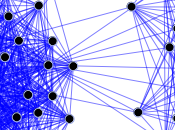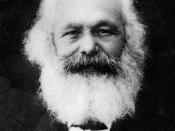COMPARE AND CONTRAST BOURDIEU'S APPROACH
TO THE AGENCY/STRUCTURE DICHOTOMY
WITH THAT OF GIDDENS
In recent years, several authors have attempted to deal with the problem of the relationship between agency and social structure. This has manifested itself in the theory of structuration. Anthony Giddens' structuration theory is one of the best-known and most articulated efforts to integrate agency and structure. His theory proposes a duality of structure, in that agency and structure cannot be seen as independent of one another. Pierre Bourdieu is another important theorist to contribute to this agency-structure debate. His theory of habitus and field is concerned principally with overcoming the opposition between objectivism and subjectivism. While there are many differences between these two theories, there are in fact a few similarities. Both Bourdieu and Giddens put forward a duality of structure, and they are also both involved with the issue of constraint on agents. Similarly, Bourdieu's habitus can be linked to Giddens's theory of structure.
In order to fully understand the comparisons and contrasting issues between Bourdieu and Giddens, it is important to look at each theorists work separately, and then to discuss the issues which arise.
Giddens proposes that agency and structure cannot be conceived of apart from one another. In other words, they are two sides of the same coin. You cannot have one without the other. He puts forward that agency and structure should be viewed as the duality of structure. By this he means that 'social structures are both constituted by human agency, and yet at the same time are the very medium of this constitution' (Thompson, 1989: 58). He even goes so far as to say that 'every research investigation in the social sciences or history is involved in relating action [often used synonymously with agency] to structure' (Ritzer, 2004:...


